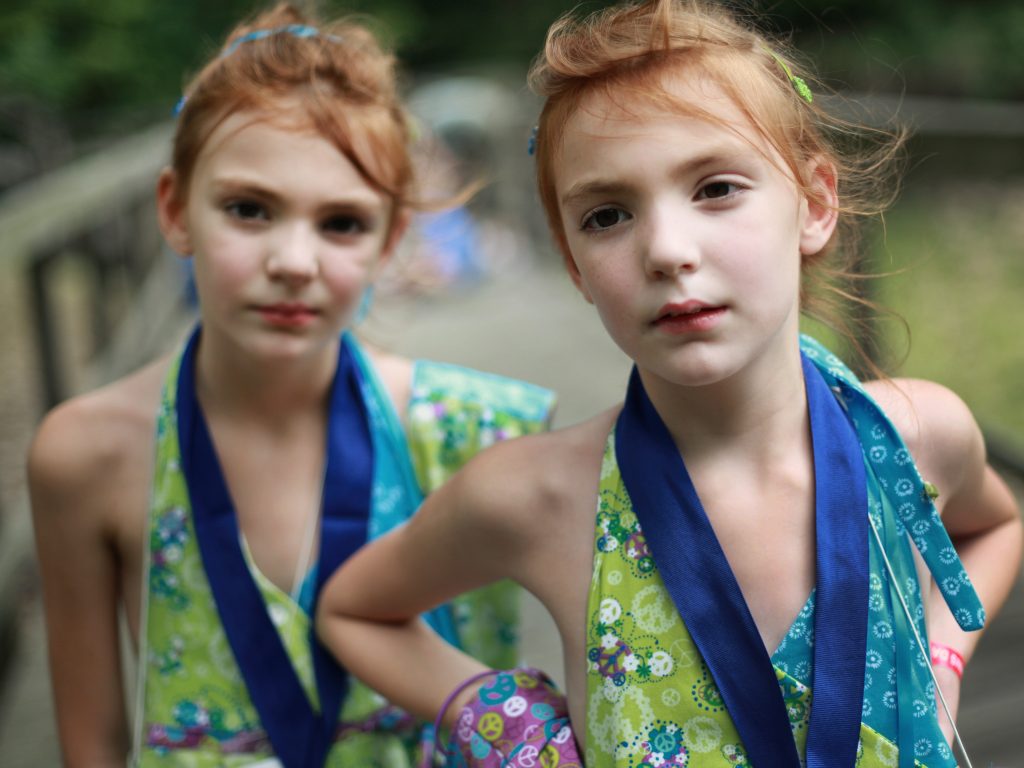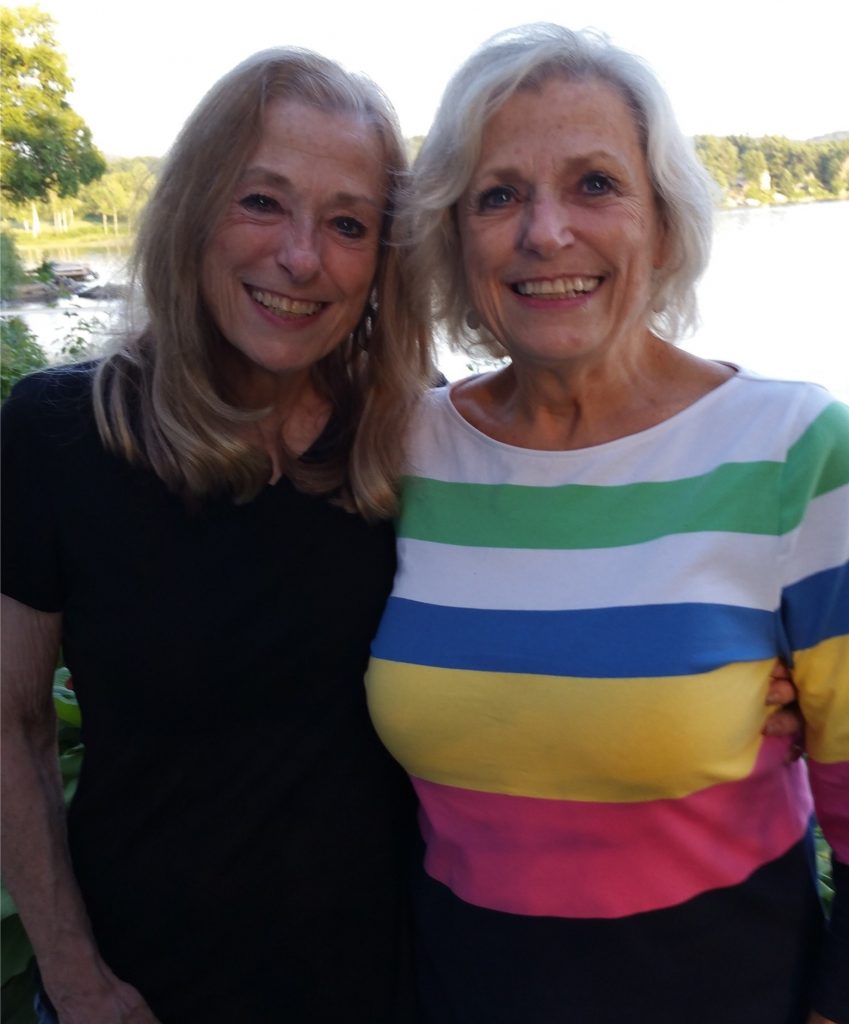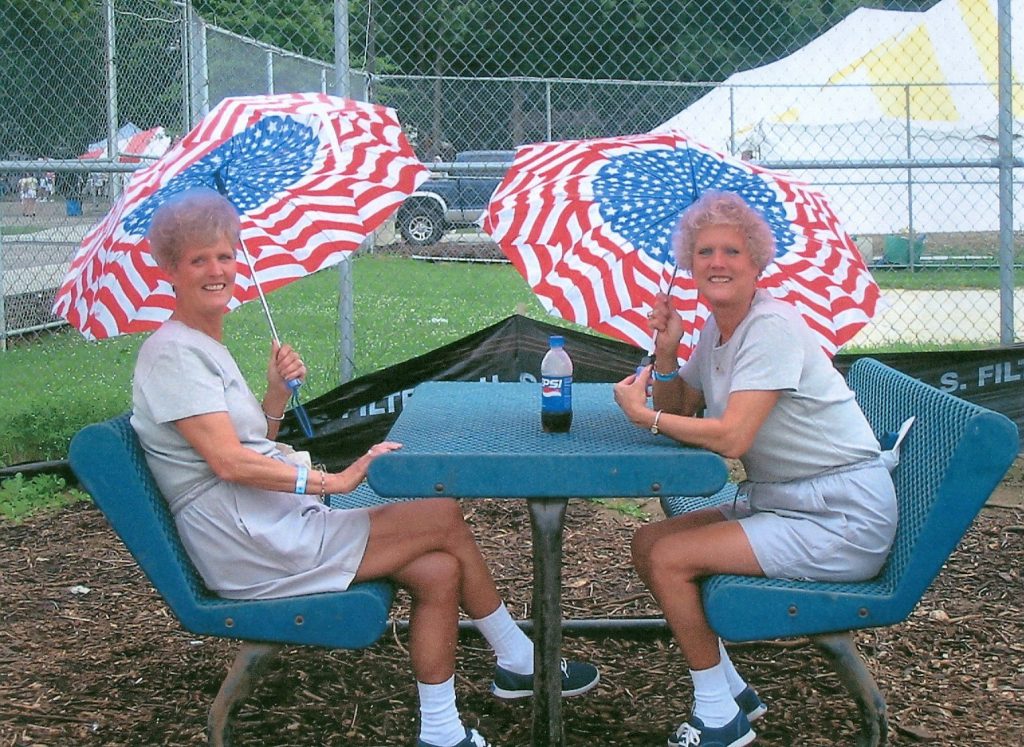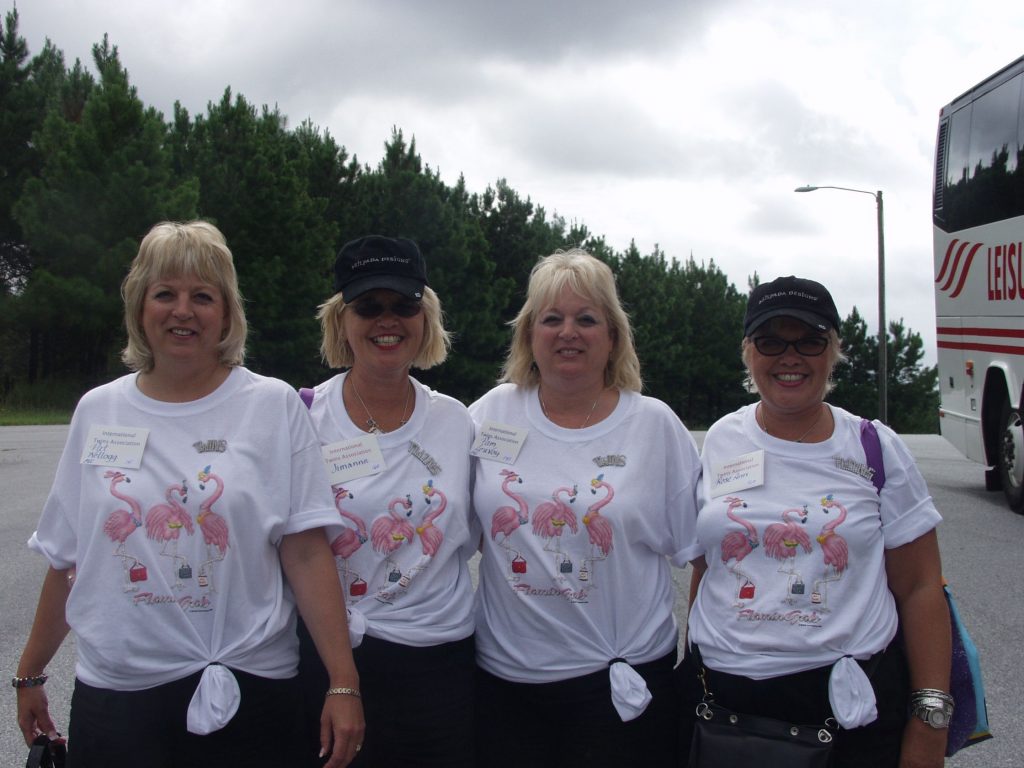How Twin Culture Challenges Our Notions of Self

My twin sister Dorothy Davis takes me to her yoga class and introduces me to her instructor. We stand side by side and smile idiotically as she looks us over and says, “Wow, you really are identical.”
Even as we offer ourselves for study, the yoga teacher fails to see that Dorothy has a distinguishing dimple when she smiles. Our sameness overwhelms her. We play this “twin game” as a challenge to the observer to sort through our sameness and find identifying differences between us. Indeed, we want the yoga teacher to spot what is unique about each of us, but she is overcome by our similarities.
This exchange with the yoga instructor happened 15 years ago, but similar versions of it have played out for my twin sister and me our entire lives.
As anthropologists, Dorothy and I see cultural stereotypes of twins and the twin relationship, or twinship, at work in shaping the lens through which people see the two of us. Much of our recent work has focused on reshaping that lens through ethnographic studies of twins. By interviewing 22 sets of identical twins ranging from ages 22 to 77 at a twins festival in 2003, we began a journey toward understanding how twins address, negotiate, and challenge the “who am I” and “who are we” questions of selfhood.
Our aim has been to study twinship as a normal form of human experience—rather than as deviant or dysfunctional compared to the experiences of singletons. We wanted to identify key cultural themes that shape the experiences of twins but that are largely ignored by researchers. In 2014, I published the results of our research in my book Twins Talk. After more than a decade exploring the nature of twinhood, we came away with richer insights into the lived experiences of twins and deepened the way we relate to each other.
Academics have certainly had their way with identical twins, using them mostly as a research tool. Early thinkers, such as 19th-century British polymath Francis Galton, as well as U.S. psychologist Thomas Bouchard Jr. in the 20th century, used twin research as a way to assess the relative contributions that heredity and environment play in making us who we are. Drawing on data from life histories, questionnaires, and standardized personality assessments, these studies argued that identical twins shared inherited traits that were rooted in their biology and that were minimally, if at all, affected by the environment.
In popular magazines and books, identical twins have been portrayed as freaks of nature, as clones, and even as walking side shows with four legs.
Since then, the field has largely moved from psychosocial methods to a focus on genetics and molecular biology. Because gene expression is now recognized as more malleable and changeable throughout a lifetime than previously thought, distinctions between genes and environments have become blurred. However, very little of this research goes beyond abstract scientific questions concerning nature versus nurture. Our research, on the other hand, focuses on the everyday human experiences of being a twin—based on twins’ perspectives.
Although the majority of twins develop normally, psychology and psychiatry studies focus on what some researchers see as negative aspects of twinship. The prevailing view in current psychological research is that twins and relationships between twins are inherently abnormal and pathological. Notions of twins as being too close or too self-contained dominate. For example, the twin bond is characterized as a kind of psychopathological unit identity. A unit identity collapses individual identities into a single being (example: my sister and I constantly being referred to as “the Davis twins” rather than as Dorothy and/or Dona).
In popular magazines and books, identical twins have been portrayed as freaks of nature, as clones, and even as walking side shows with four legs. For example, in an article in Discover magazine, author Bruno Maddox portrayed the 2006 Twins Days Festival in Twinsburg, Ohio, in a harsh light, noting that he was “reeling away in muted horror” at the prospect of what he called “pan-Twinism.” Earlier in the article Maddox hinted that twins, similar to clones, were “without [their] own identity, without (perhaps) a soul.”
By contrast, most of the attention that the medical literature dedicates to twins is warranted and helpful. Gestation and birth are more complex and risky for twin babies and their mothers than for singletons. The health consequences of premature birth—nearly 60 percent of twins are born premature—are valid issues to address, especially as new reproductive technologies are resulting in higher twinning rates. However, biologically healthy twins receive short shrift in the medical literature.
Dorothy has a master’s degree in anthropology and teaches classes at the University of North Carolina in Greensboro. I have a doctorate and specialize in medical and psychological anthropology. When we teamed up to conduct our own twin research, we began by flipping the prevailing narrative. Instead of asking what constrains individuality in twins, we asked what constrains mutuality in singletons. Mutuality comes from shared experience and leads to a sense of togetherness, but does not imply any diminishment of identity or individuality. A similar dynamic can emerge during marriage—two individuals maintain their identities and at the same time enjoy a sense of co-being or mutuality. Yet while this mutuality is considered necessary and healthy in the married pair it is considered to be dysfunctional in twins.
For my entire career, whether working in Newfoundland, Norway, or at home in the U.S., I have focused on doing fieldwork from the “ground up.” This means collecting narrative data and capturing informants’ experiences, views, and perspectives in their own words. Attending the Twins Days Festival in 2003 gave us access to a large and convenient sample of twins. This immersive experience affected us profoundly, and, of course, our own experiences of being twins informed our research.
The festival hosts around 2,000 sets—identical and fraternal twins as well as triplets and quadruplets—who participate in three days of activities, including a parade, contests, and parties. Twinsburg is unique among twin festivals in that it has a research pavilion set aside for twin researchers who are investigating a wide variety of topics, including genetics, incontinence, hearing abilities, hair loss, and altruism. In addition to the 22 sets of twins we interviewed, our student research assistant, Kristi Cody, interviewed us, providing our twins talk study with 23 sets of twins.
None of us—neither Dorothy, Kristi, nor I—anticipated the impact we felt mixing with hundreds of pairs of twins, most of them dressed identically and celebrating their twinship. Kristi felt she had entered an episode of The X-Files. Dorothy and I were as shocked as Kristi. Being in the midst of so many twins who celebrated their twinship by emphasizing their likeness evoked a visceral response—grown adults should not be doing this, we said to each other. But as we did our interviews, we began to appreciate how our subjects, like us, have come to balance their mutuality and individuality. What is unique about festival behavior is that it is an in-your-face “rite of reversal” in which twins become the valued norm and singletons the deviant other.
Through my evolving insider’s view, I came to a more in-depth understanding of the gap between what researchers think is relevant about twins and what twins themselves consider relevant to the experience of twinship.
Twins see themselves as the same as each other and as different from each other—it’s a paradox of being twins made more striking in a singleton-dominated world. Twins negotiate their sense of individuality and mutuality within and against Western cultural norms. Because they are cast as deviants, twins have a keener understanding than researchers do as to how the dominant culture shapes their lives. For identical-looking twins, it is the way they appear to others—not the molecular structures of their cells—that defines and confounds their identities.
Identical twins actually have a more finely developed awareness of their uniqueness than do singletons, and this understanding goes beyond physical features. Identical twins personify a kind of enhanced self. Having an identical twin does not compromise one’s self at all—instead, each twin enriches both the self and the other. Twindividuals do not see independence and mutuality as opposites or as having a zero-sum relationship to one another.
The scientific literature, on the other hand, is dominated by Western egocentric notions of the self. The view that the self is a private, bounded, unique center of awareness—a one that stands in contrast to others—is taken for granted. Twin researchers fail to see how that view is formed by culture and history; indeed, the socially constructed nature of it goes wholly unrecognized and unexamined. Even researchers in cultures that have more nuanced perspectives on individuality and mutuality, such as Japan and Sri Lanka, unquestioningly adopt Western notions of the self.
The twins we interviewed at the festival have an acute sense of being a special, alternative, rebellious type of self. They embrace the larger society’s view that twinship is aberrant, and they proudly claim the label freak. Their twin condition distinguishes them, in ways they view positively, from the dominating world of singletons. At such festivals, twins consciously normalize their bond and relax into a setting where rebellious behaviors—actions that accentuate their twinship—do not stand out.
Identity and selfhood are complex phenomena in any context—at work, at family gatherings, and in yoga class. As Dorothy and I posed for her yoga instructor, we were performing a stereotype of twins. The sameness of twinship is what the yoga instructor expected, so that is what she saw. In real life, our twinship is a part of multiple roles and relationships—some shared and some not—in which we find ourselves embedded. We have our own distinct careers, families, and friends. We have made different life choices. Yet our twinship—past, present, and future—remains a defining aspect of our lives and our individual and collective sense of personhood.
When Dorothy and I conducted our initial interview in Twinsburg, it was the first time in our lives that we, as twins, had talked to another set of twins. As we continued, we listened to our interviewees describe their own experiences with twinship. They provided us with valuable insights into how people construct their identities within a society—and forced us to question our own previously unquestioned stereotypes about twins.
Our conversations with twins during those three days triggered a transformation in my sister and me. Since then, as anthropologists, we have had a new purpose—to challenge the predominant views of twins. When we began our research, we thought we were experts on being twins because we were twins—for once we were the natives rather than the outsiders. We found, however, that our experiences with other sets of twins shed a new light on the fact that we share a very special, lifelong relationship with each other. We also gained a sense of twinship as a cultural phenomenon. The twins we met at the festival introduced us to a rhetoric of being militant about twinship—they actively centered their worlds in opposition to the singleton-dominated world. This was a lesson I applied in positioning my own academic twin research, but I found myself adopting it in my personal life as well.
Now, in late middle age, Dorothy and I are reinvesting in our twinship as a unique and special kind of relationship. We are more committed to spending time together than when we were developing our careers. We take special interest in our aging bodies, both for their similarities and differences. Not long ago we attended our 50th high school reunion. We took great joy in playing the twin game once again.
Editors’ note: An earlier version of this article’s subtitle included the expression “go native.” Though it was not intended as such, we recognize that the phrase can be derogatory. We take great care to use wording that is respectful of all people. We apologize and have modified the subtitle.


































